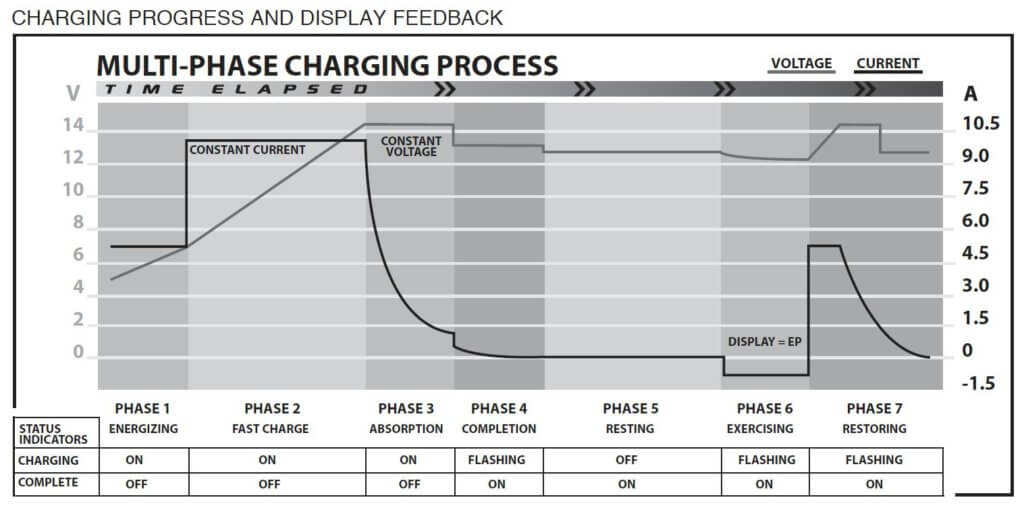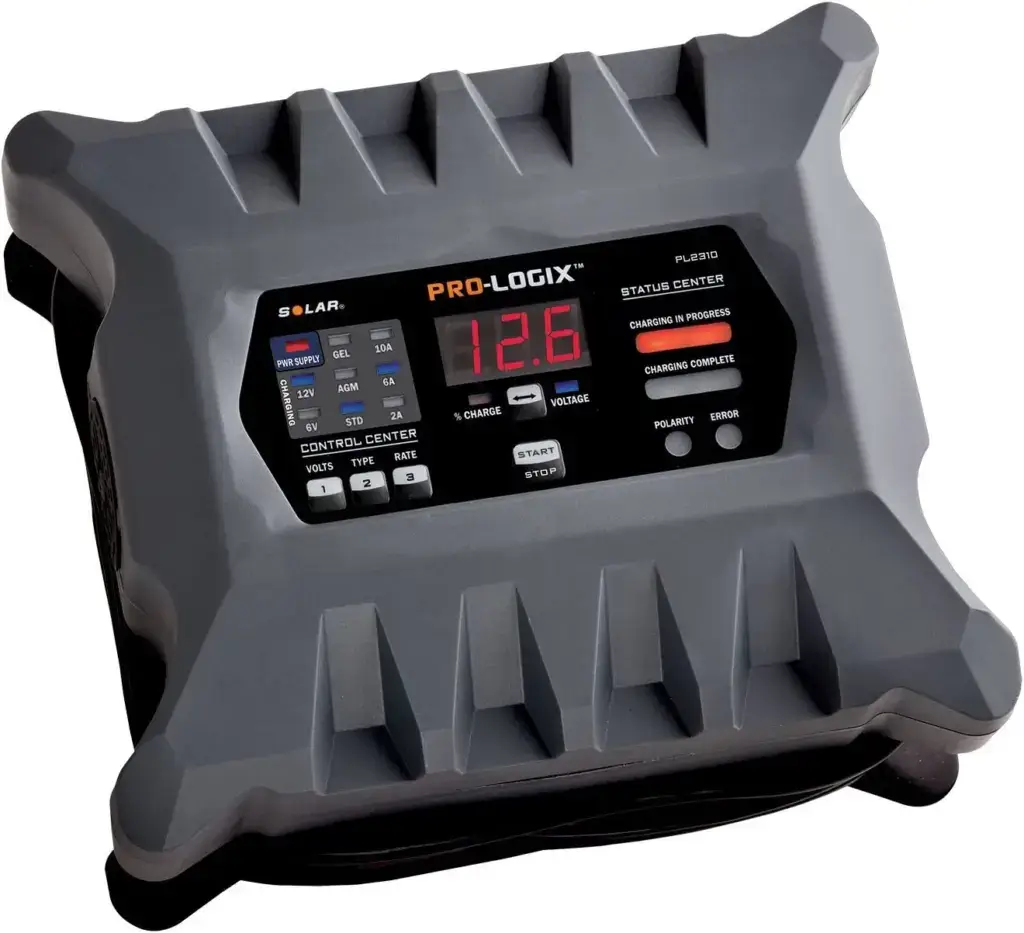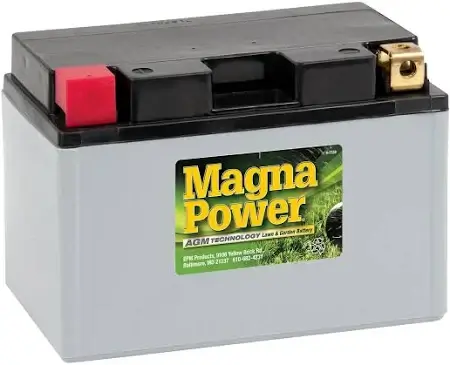How to buy a car battery charger
Buy a car battery charger with these features
Modern car battery chargers aren’t like your grandfather’s charger. They’re much smarter and then have features that can recondition a dead battery. But you’re still probably wondering what size charger you should get and what features it should have. I’ll cover all of that in this post.
Rule #1 for buying a car battery charger — Don’t buy used
There are lots of old outdated chargers on ebay and craigslist. Don’t buy those. Old style battery chargers can ramp up to almost 18 volts when charging a dead battery. Any voltage over 16.5 can fry the electronics in your modern computerized car. They’re also designed to charge standard
lighting ignition (SLI) flooded lead acid batteries. Most newer vehicles have Enhanced Flooded Batteries (EFB) or Absorbed Glass Mat (AGM), which require a different charging routine.
Some chargers also offer a GEL cell setting. Gel cell batteries are often used in electric start lawn mowers. If you have electric start yard equipment with Gel cell batteries, look for a charger with that setting as well
What amp rating do you need for your new charger?
A car battery charging is different than a battery maintainer. Battery maintainers are sized a 1 to 5 amps. If you try to charge a dead car battery with one of those, it’ll takes days to bring it up to full charge. You want a battery charger with at least 10-amps of charging power. But you don’t want to go too large, because AGM and Lithium batteries charge best with a low current for longer periods; low and slow is best for those.
Rule of thumb for choosing a car battery charger size in amps
Buy a charger that can output 10% to 20% of the Ah rating of the battery, but no more than 30% of the battery’s Ah rating. So a 100Ah battery would need a 10-amp to 20-amp charger.
Do you need multiple voltages?
You’ll find very few 6-volt batteries these days. So this feature isn’t all that necessary
The best chargers have a recondition mode
There are at least 3 phases to recharging a battery. If it’s severely discharged, chances are high that its developed some level of sulfation. The best chargers can handle this and operate with as many as 7 recharging phases (more on that below). For basic chargers, the first phase is Reconditioning.
Reconditioning phase
The reconditioning phase is designed to break down the sulfate crystals that formed during the discharge and return them to the electrolyte solution. If you skip the reconditioning phase and just try to recharge the battery by jamming in high amperage, the high resistance from the sulfate crystals will generate high heat that can warp the plates and damage the battery. Once the reconditioning phase is complete, the charger enters the bulk mode phase
Next, the charger changes to Bulk mode, charging at high amps but low volts to replace as much energy as possible
Bulk mode phase
In the bulk mode phase, the charger outputs high amps at low voltage. Recharging a dead battery in bulk mode takes between five to eight hours. The bulk mode accounts for about 80% of the battery charge. The rest is accomplished through the absorption mode.
Finally, the charger will change to the absorption mode to ensure that the charge penetrates deep into the sponge lead plates.
Battery absorption phase
During the absorption mode, the charger lowers the current (amps), while raising the voltage. A complete absorption mode for a dead battery can take as long as seven to 10 hours to fully saturate the lead plates. If you cut short the absorption mode, the plates will sulfate, shortening the life of the battery.
What a 7-phase charge looks like
This multi-phase charging protocol is used by the Clore Solar ProLogix series of automotive battery chargers. Notice the differences in voltage and amperage between the different phases

Here’s how a 7-phase car battery charger workds
I like the Solar ProLogix chargers
Clore Manufacturing has been making battery chargers and jumper packs forever. They’re the brand professionals use. The Solar ProLogix models are very smart chargers that can recondition a battery and fully charge it without any intervention from you. They charge standard lighting ignition batteries (SLI), absorbed glass mar (AGM), and Gel cell batteries (the kind you find on lawn mowers).
Solar ProLogix PL2310 battery charger

The Solar ProLOGIX PL2320 battery charger charges at 20-amps or 10-amps and works as a 2-amp battery maintainer
This model charger charges at the rate of 10, 6, or 2-amps. It charges 6-volt and 12-volt batteries. You can use it as a battery maintainer at 2-amps, or a battery charger at 10-amps to recharge your battery faster
Solar ProLogix PL2320 battery charger
This model charger charges at the rate of 20, 10, or 2-amps. It charges 6-volt and 12-volt batteries. You can use it as a battery maintainer at 2-amps, or a battery charger at 20-amps to recharge your battery faster
Solar ProLogix PL2410 battery charger
This model charger charges at the rate of 10, 6, or 2-amps. It charges 12-volt and 24-volt batteries. You can use it as a battery maintainer at 2-amps, or a battery charger at 10-amps to recharge your battery faster
Need more help? Check out this article from Interstate Batteries
©, 2021 Rick Muscoplat
Posted on by Rick Muscoplat

